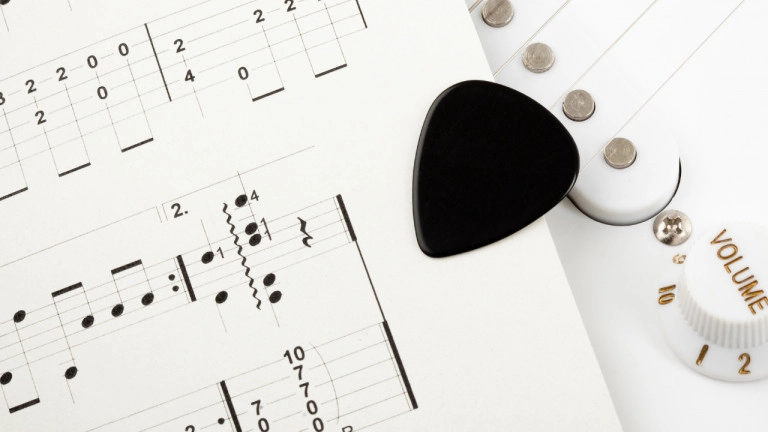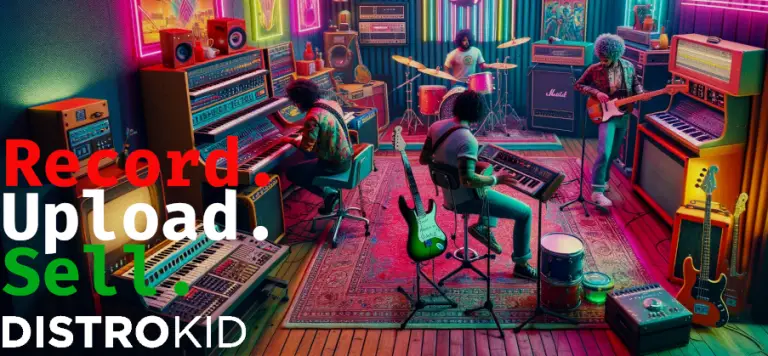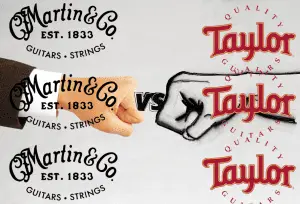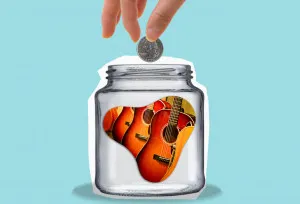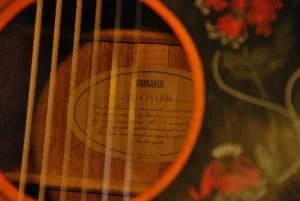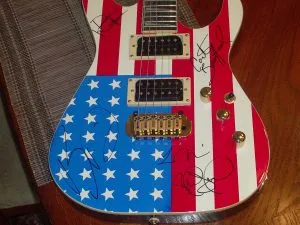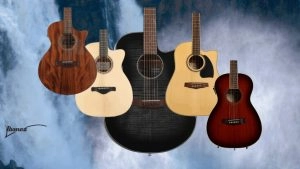Reading guitar tab is very simple — certainly a lot easier than standard music notation.
However, you still have to put some time and effort into learning what all the numbers and symbols on tabs mean. (We also have some easy tips to making learning guitar easier.)
Taking online guitar lessons, or even free YouTube guitar lessons is a great way to learn TAB.
But based on my experience as both a guitar teacher and player, I’ll give you the basic rundown on how to read guitar tabs, its advantages, and its shortcomings.
Ready to learn how to read guitar tabs? Let’s get started!
Basic tab layout
The layout of a guitar tab is a graphic representation of what you see when you look down at your guitar’s fretboard.
There are six horizontal lines, each representing a string on your guitar, that look like this:

Simple, right?
The confusing part — which seems counterintuitive to most people — is that the bottom line represents the top string of your guitar, the low E.
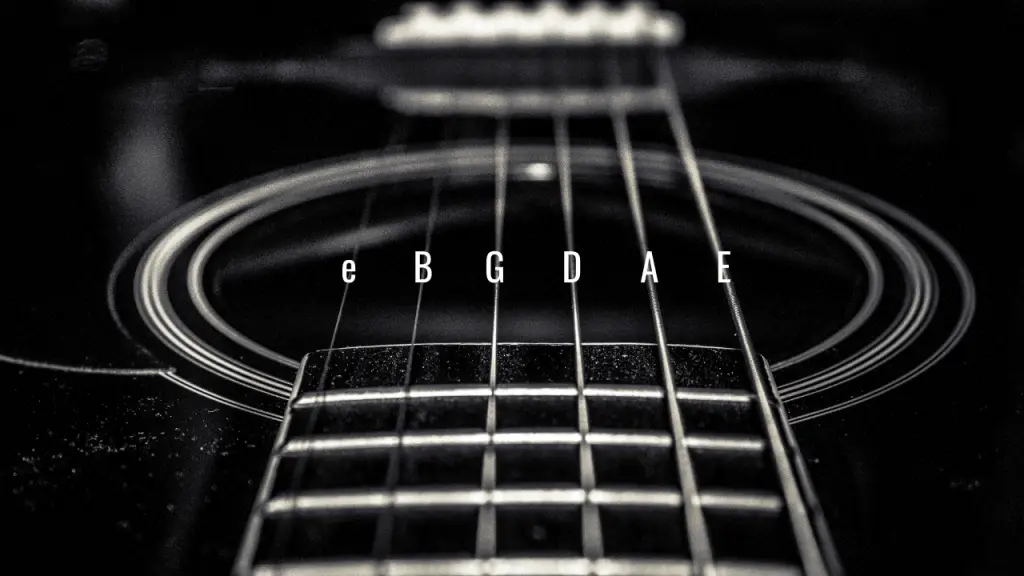
It’s an inverted representation of your guitar’s fretboard — exactly the way you see it when playing.
The thinnest string, the high E, is usually represented in tab by a lowercase “e” to make things easier.
Many beginners mistake the vertical lines to represent the frets of your guitar. But they’re actually the measures, or bars, of the piece of music you’re playing.
For example, if you are strumming an Am chord in a 4/4 time signature, the tab would look like this:
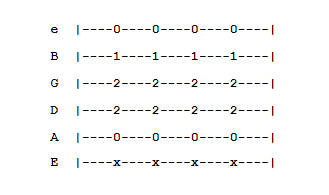
Finally, tablature is always read left to right.
This means that you should play the note or notes that are farthest to the left first and then move toward the right, regardless of the height the note appears in the tab.
This can also be confusing and counterintuitive at first, but as long as you read from left to right, and not top to bottom, you’re golden.
Remember, like anything that’s new, reading tab and learning the guitar takes time. Stay patient and practice often.
Notes
The next thing you’ll notice in a guitar tab is a series of numbers within each measure. It’s confusing at first, but stay with me!
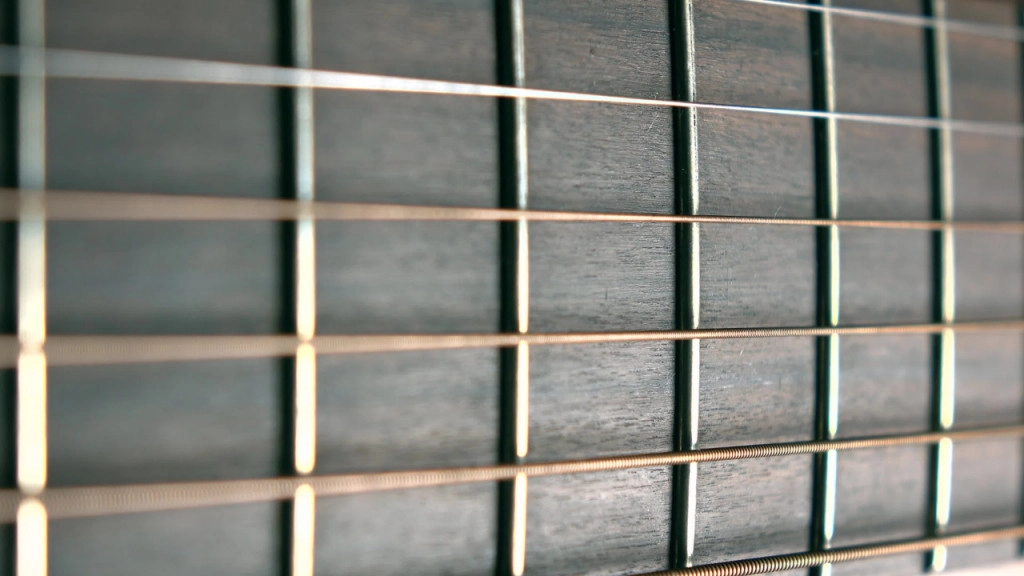
These numbers represent the fret on the guitar that you place your finger on. The horizontal line on which the number appears means that you place your finger on that string, at the indicated numbered fret.
For example:
- A “2” on the second line from the top would mean: B string, second fret.
- A “5” on the third line from the top would mean: G string, 5th fret.
- A “0” represents an open, or unfretted string, and an “x” means the string must not be played, or must be muted with your palm, depending on the context.
For example, the following tab tells you to place your index finger on the low E string on the second fret, followed by the third fret on the A string, and the fifth fret on the D string:

In the example above, the notes would be played one at a time, and one note per measure.
However, these notes can appear in different ways depending on how complex the piece of music is.
In general, the closer together the numbers appear on a tab, the faster they should be played one after the next. And the further apart they are, the longer the gap you need to leave between notes.
You’ll need to determine these speeds and rhythms by listening to the song you’re learning.
Chords
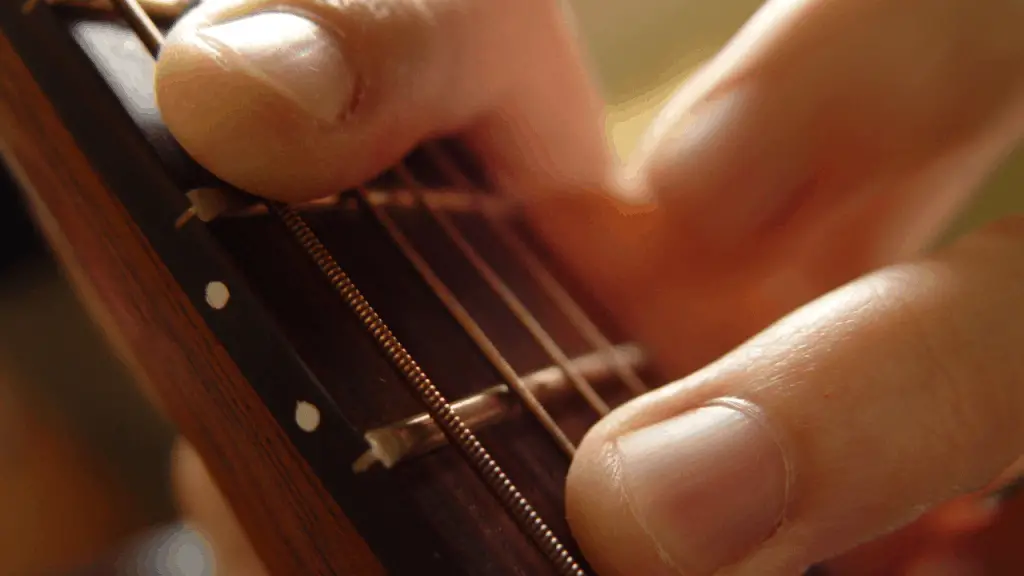
Chords on guitar tabs appear the same way as single notes, except they’re stacked on top of each other.
Any time you see a note on top of another, it means they should be played at the same time.
For example, an Am chord in tab form would look like this:
Songs made up of simple chords in the rhythm section are rarely tabbed. Usually the chords appear in graphic boxes above the lyrics of the song.
If you see notes as tabbed above, it usually (but not always) means that all the notes are supposed to be picked together rather than strummed.
A picked or arpeggiated Am chord, with some notes picked together simultaneously, would look like this:

In the example above, you would pick the notes in an Am chord individually in the first measure. In the second measure, you would pick the A string (open), followed by the D string on the 2nd fret, and then pick the last three strings of the chord at once — one finger per string.
Symbols
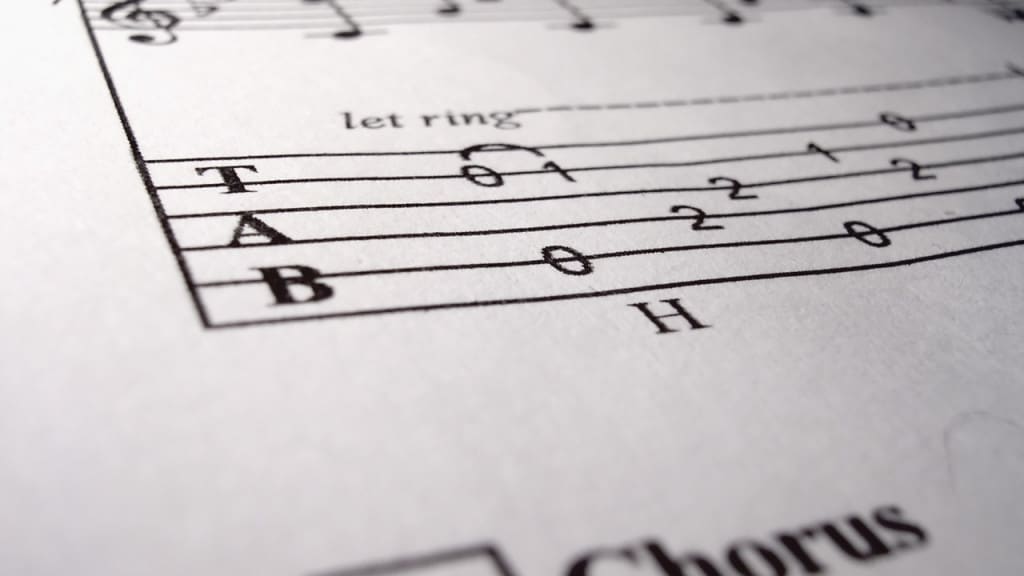
As far as basic tab reading goes, you’ve just learned most of what you need to know! Simple, right?
However, we still need to talk about symbols.
For beginners, symbols are not hugely important, but they’ll certainly be useful later.
The most common symbols found in guitar tabs are slides, pull-offs, hammer-ons, and bends.
They’re written like this:
- h – hammer on (sometimes written as ^)
- p – pull off (sometimes written as ^)
- b – bend string up (or down)
- r – release bend
- / – slide up
- \ – slide down
- v – vibrato (sometimes written as ~)
Slides
A slide simply means sliding from one note on the fretboard to another.
For example, sliding between the 2nd and 5th fret is indicated in a tab like this:
Slide up:

Slide down:

Hammer-ons and Pull-offs
A hammer-on is tapping a note with your finger after picking the string.
Pull-offs are hammer-ons in reverse: letting go of one note onto another, after picking the string.
In guitar tab, hammer-ons are indicated by an “h”, and pull-offs are indicated by a “p.”
Hammer on:

Pull-off:

The secret to knowing whether it is a pull-on or pull-off if indicated with a “^”, is that if there is a lower number first, you will hammer on to a higher note on the fretboard. If there is a higher note indicated first, you are pulling off to a lower note.
Bends
Bends — raising or lowering the pitch of a string by bending it with your finger — are usually indicated by a “b” and followed by an “r” to indicate when to release the bend:

Vibrato
Vibrato, the technique of repeatedly bending and releasing a note giving a vocal effect to your playing, is expressed in tab form either as a “v” or a “~” symbol (they mean the same thing), as follows:

Or:

• • •
Some simple tabs to get you started
Now that you know the basic theory behind reading guitar tabs, the best way to start learning is to put this theory into practice!
Here are 3 examples of popular songs in tab form which employ some of the techniques and symbols explained above.
Twinkle Twinkle Little Star
This is a good song to begin with as you’re likely already very familiar with the melody. This will make it easier to follow along with the tab as you know what it’s supposed to sound like.
Try and use your index finger to play notes on the first fret, middle finger for notes on the second fret, and ring finger for third fret notes.

Smoke on the Water
This song by Deep Purple is another one you’ve likely heard before. But have a listen to the song beforehand anyway to get a better idea of the opening riff.
In this tab, you’ll notice that you need two play two strings at once, as discussed above.
The best way to do this is to use your left hand index finger as a partial barre chord, and then use your right hand index and middle fingers to pick only the G and D strings.
The song also requires a slide in the second measure.
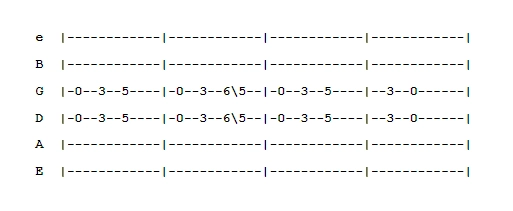
Back in Black
“Back in Black” by ACDC is another song you’re probably familiar with, but again, it’s a good idea to listen to it beforehand.
This tab combines chords and symbols like bends and pull offs.
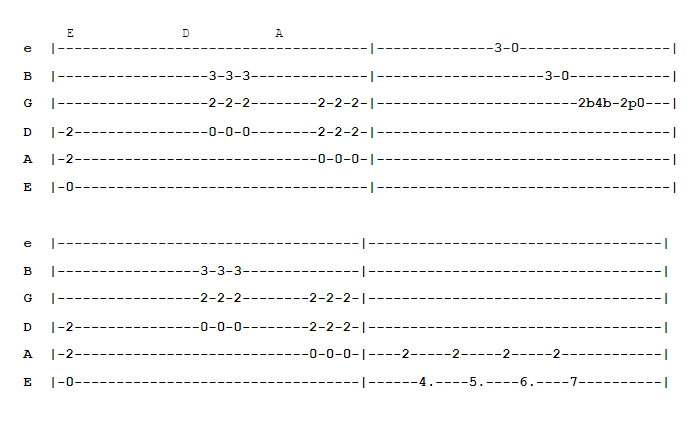
• • •
The Pros and Cons of Guitar Tabs
Guitar tab has completely changed the way people learn to play guitar, and made learning the instrument more accessible than ever before.

Tab is simple to read and write. It will give you access to a gazillion free songs online. And it indicates most guitar flourishes, including bends, slides and vibrato.
But there are some downsides to tablature:
Tab doesn’t indicate melody or tempo. You’ll need to listen to the song in order to learn it. And because anyone and their sister can create and publish tabs online, their average quality is rather low.
I have wasted hours trying to work out a song, only to find that the tab was wrong!
This is largely because tabs are very time-consuming to create, and there is not much money in it for the creators.
Even expensive tab books are often riddled with slight mistakes! These are usually very small errors, however, so the majority of tabs will still give you a good general idea of the song.
One of the most reliable guitar tab sites is ultimate-guitar.com.
There are often multiple tabs for the same song — sometimes dozens for well-known tunes. And they have a rating system to help you choose the most reliable versions.
All in all, guitar tablature is quick and easy to pick up, and is a great way of learning your favorite songs!
Final thoughts
And that’s it. We told you it was easy!
While there are some more advanced techniques involved in tabs, what we’ve discussed above will allow you to easily read and play most basic and intermediate guitar songs.
With some practice, you’ll be reading tabs in no time!

